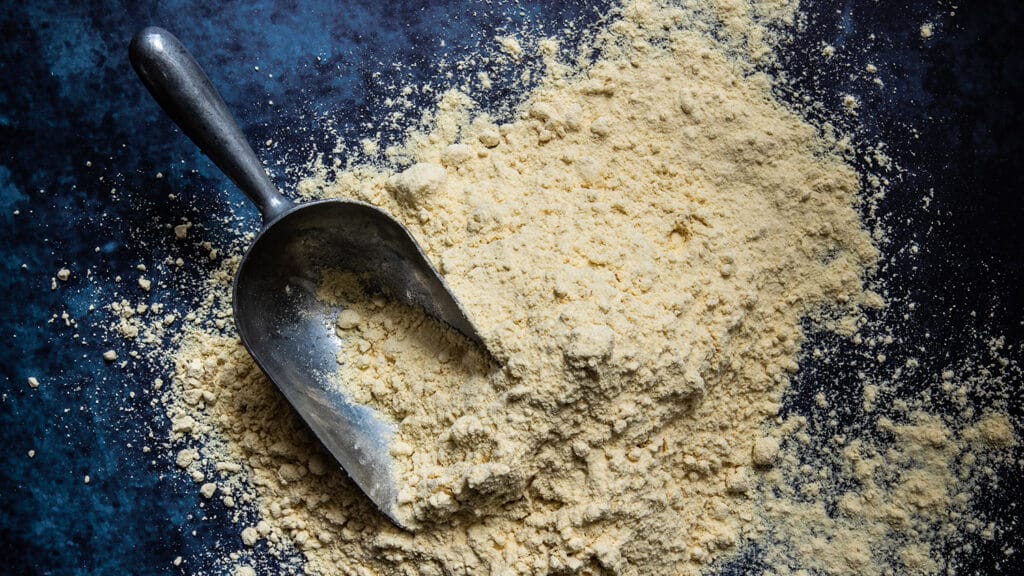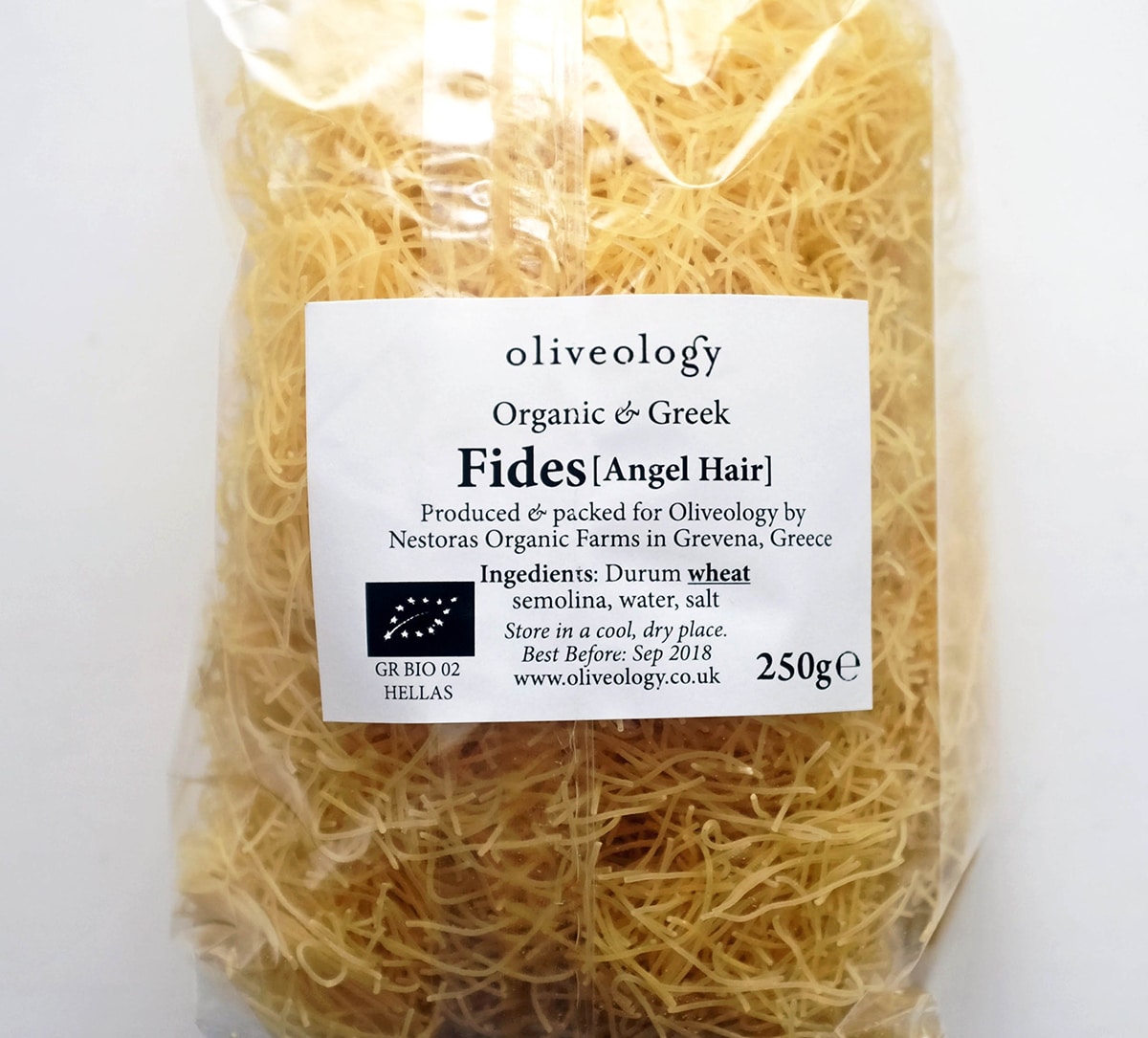Cupboard love: chickpea flour
Ed Smith explores the essential components of a kitchen cupboard. This time: chickpea flour


“IT CAN CREATE FOODS THAT ARE CRISP AND CRUNCHY, THIN AND FOLDABLE, LIGHT AND SILKEN, OR THICK AND FLUFFY”
Image: Regula Ysewijn
The general idea behind these columns has been to persuade you to seek out an uncelebrated ingredient, and then make it one of your staples, because it’s one of mine. This one is slightly different. The ingredient whose virtues I wish to extol is chickpea flour, and I won’t lie to you: while this is a product that I have used on a number of occasions, it’s a number so low that my toddler could probably count to it.
I’m not a frequent user, but I think I could become one. I can certainly see its appeal: it’s nutritious, can be utilised in a variety of ways, and is gently nutty, savoury and properly tasty. Rachel Roddy (a food writer I admire tremendously) stated recently: “I have come to feel about bags of chickpea flour as I once did about packets of cigarettes: one on the go, one spare at all times.” If there’s a culinary hit that Rachel is addicted to, I want a piece of it.
You can buy chickpea flour at From Field and Flower, and as with all the stall’s products, it has been carefully sourced and represents the best of its kind. This version is Italian (‘farina di ceci’), though as chickpea flour is typical to southern Europe, you might also find it labelled ‘harina de garbanzo’ (Spanish) or ‘farine de pois chiche’ (French). There’s ‘gram flour’ (Indian), too, which is technically an ever so slightly different chickpea, but also basically the same.
This soft, super-fine yet strangely tactile gold dust is gluten free, which means you won’t have much luck using chickpea flour if you’re after bouncy pasta or ethereally light loaves of bread. It is, however, remarkably diverse in its uses and can create foods with a multitude of very different characteristics: crisp and crunchy, thin and foldable, light and silken, thick and fluffy.
Flick through a cookbook that focuses on Indian cuisine and you’ll see that gram flour is often used as a dusty coating, or mixed with water to form a batter, which will turn crisp when fried: think gram flour-rolled vegetables, pakoras and bhajis. This is also the method used for tortillitas de camarones, an Andalusian fritter for which small shrimp and chopped onions are rolled in a loose batter and deep-fried into a moreish web, the very thought of which has me reaching for a glass of cold fino sherry.
Head to Horn OK Please in the Borough Market Kitchen for a lesson in making dosas – thin chickpea flour and water pancakes made using an ever so slightly viscous but still smooth batter, which is ladled onto a flat pan, spread into a large circle, dry fried until golden-brown and bubbling, flipped, filled with spiced potato, then folded. I’ve tried this with equal parts flour and water, a pinch of baking soda and salt, and filled them with bean sprouts, normal chickpeas, loads of fresh herbs and a cumin and lemon-licked yoghurt – and it was grand.
In fact, pancakes are very much a chickpea flour thing. There are thicker, oven-baked pancakes known as socca in France or farinata in Italy, where again a batter is made up, at 2:1 water to flour this time, then left to thicken for eight hours or overnight before being poured into a skillet or similar and baked until set. Slices of this work well as a base for cooked seasonal greens and salty soft cheeses, springtime ragus and early summer tomato salads.
To be honest, you can also cook the same batter in a pan like a normal pancake (just don’t call it a farinata). A more substantial result is achieved if you whisk or blend in another agent at the same time, like eggs (to make an omelette or frittata) or silken tofu. Maybe my favourite of the handful of chickpea flour experiments I’ve run so far was using the flour as the prompt to make okonomiyaki, a Japanese savoury pancake/omelette, filled with carrots, cabbage, ginger and spring onions and coated with an unhealthy drizzle of Kewpie mayonnaise – I heartily recommend looking up a recipe for that and having a go.
I leave you, however, with one further suggestion, and that is to make a platter of panisse – a snack that’s on-trend right now in London’s restaurants, and can also be used as a vessel for some of the Market’s other fine commodities: a snow shower of comte or parmesan, a scattering of za’atar or dukkah, or a dunking of something punchy like aioli, romesco sauce or a salsa verde.


